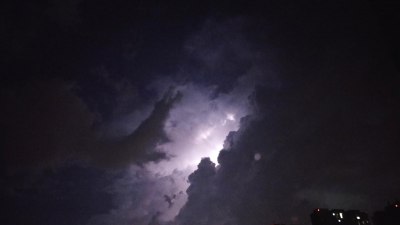Why You Shop Like a Rational Adult Until It Drops Below 40 Degrees
Explore how weather influences shopping behavior, particularly below 40 degrees.

The concept of rationality in shopping behavior is fascinating, especially when it's juxtaposed against fluctuating weather conditions. As temperatures plummet below 40 degrees Fahrenheit, many individuals experience a noticeable shift in their shopping approach. This article explores the psychological, behavioral, and social elements at play when we engage in retail therapy as rational adults. Understanding these nuances can deepen our comprehension of consumer behavior and the various factors that sway our purchasing decisions.
The Rational Shopping Mindset
When we talk about shopping rationality, we often refer to the decision-making process that involves logical thinking, evaluation of needs versus wants, and comparing prices and products before making a purchase. Typically, we make informed choices, utilize shopping lists, and stick to budgets when making purchases. A rational shopper aims to maximize utility while minimizing costs, aligning purchases with personal values and practical needs.
The Impact of Weather on Consumer Behavior
Weather significantly influences consumer behavior, as various studies highlight. For example, during warmer months, shoppers tend to spend more on outdoor-related products and experiences, while their spending patterns transform as the temperature dips. This change can be attributed not only to the necessity of different clothing and goods, but also to the psychological effects of cold weather on mood and spending habits.
Behavioral Shifts Below 40 Degrees
Once temperatures fall below 40 degrees, many people experience a psychological shift. This phenomenon is often referred to as 'seasonal shopping adjustments.' As the weather gets colder and harsher, consumers feel an innate drive to acquire products that will offer comfort and warmth. This instinct is not merely about practicality; it is also deeply rooted in emotional and psychological responses that emerge during seasonal transitions.
The Comfort of Warmth
Cold weather often triggers a longing for warmth and comfort, influencing purchasing decisions significantly. Thus, you'll notice people flocking to stores for cozy blankets, hot beverages, and warm clothing. In stark contrasts to the more calculated shopping methods employed above 40 degrees, when the temperatures drop, impulsive buying behavior often takes center stage. The need for immediate comfort can lead to overspending on items that provide warmth, such as jackets and boots, suggesting that feelings often override rationality in these scenarios.
The Role of Retail Marketing
Retailers understand this instinctual behavior and often gear their marketing strategies towards promoting comfort products during colder seasons. You'll easily find advertisements showcasing cozy sweaters, winter sales on home goods, and seasonal discounts on warm beverages. This marketing isn't just effective; it's essential for driving sales during times when shopping might otherwise decrease due to harsh weather. Thus, when temperatures drop, consumers are often bombarded with messages that resonate deeply with their desires for warmth, contributing to the impulse buys witnessed during these colder months.
Psychological Mechanisms at Play
Several psychological mechanisms contribute to these behavioral shifts. One key aspect is the classic 'hedonic motivation' theory, which posits that individuals will seek pleasure and comfort, especially in adverse conditions. With cold and dreary weather impacting moods, consumers may unconsciously rely on shopping as a coping mechanism to elevate their spirits. This behavior can lead to shopping sprees that seem irrational in terms of a standard rational decision-making framework, but make sense from a psychological place focused on self-soothing in response to an unpleasant environment.
The Social Aspect of Cold Weather Shopping
Social elements also influence shopping behavior under colder temperatures. Colder months coincide with various holidays, when social gatherings become more common. This time of year often inspires gift-giving, which can prompt individuals to shop more than they typically would when the weather is warmer. Moreover, shopping with friends or family can enhance the enjoyment of spending, making it more likely that individuals will indulge in purchases they may otherwise forgo. Weather, therefore, acts as a backdrop for social interactions that model our shopping habits.
Rational versus Emotional Spending
The tension between rational and emotional spending is most apparent during colder months. Rational shoppers tend to approach holiday shopping with lists and budgets, yet the emotional weight tied to gift-giving and the joy of connection can lead to spontaneous purchases. Take, for instance, a person who may have budgeted for gifts but sees a beautifully crafted winter sweater that reminds them of a loved one. The emotionality of the moment often overshadows the logical framework of their original intent.
Strategies for Balanced Shopping
Understanding these behavioral shifts can aid consumers in finding a balance between rational and emotional shopping. Adopt strategies that address winter's psychological impacts but also promote responsible spending. For instance, creating comprehensive lists not only assists with planning but also helps budget efficiently. Setting a specific spending limit on individual items can stave off impulse buys. Additionally, reflective practices before shopping trips—like taking a moment to consider whether a purchase is a necessity or purely an emotional decision—can empower smarter shopping choices.
Navigating Cold Weather Shopping
Ultimately, the interplay between rationality and impulse during cold weather unveils an intricate aspect of human behavior. As we shop below 40 degrees, we can recognize the various influences—psychological, social, and emotional—that drive our decisions. By understanding these factors, consumers can shop more mindfully and responsibly. Embracing the complexities of our shopping tendencies in response to colder temperatures can lead to a more fulfilling and balanced consumer experience, reaffirming our ability to navigate emotional impulses while maintaining rationality in our purchasing decisions. Remember, being a rational shopper doesn't fade with the temperature; it simply evolves to reflect our inherent need for comfort and connection.











